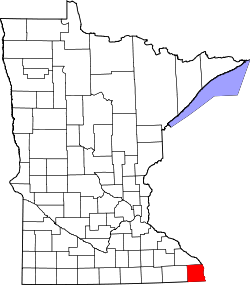Yucatan | |
|---|---|
| Coordinates: 43°40′50″N91°41′20″W / 43.68056°N 91.68889°W | |
| Country | United States |
| State | Minnesota |
| County | Houston |
| Elevation | 748 ft (228 m) |
| Time zone | UTC-6 (Central (CST)) |
| • Summer (DST) | UTC-5 (CDT) |
| Area code | 507 |
| GNIS feature ID | 655029 [1] |
Yucatan is an unincorporated community in Yucatan Township, Houston County, Minnesota. [1]


